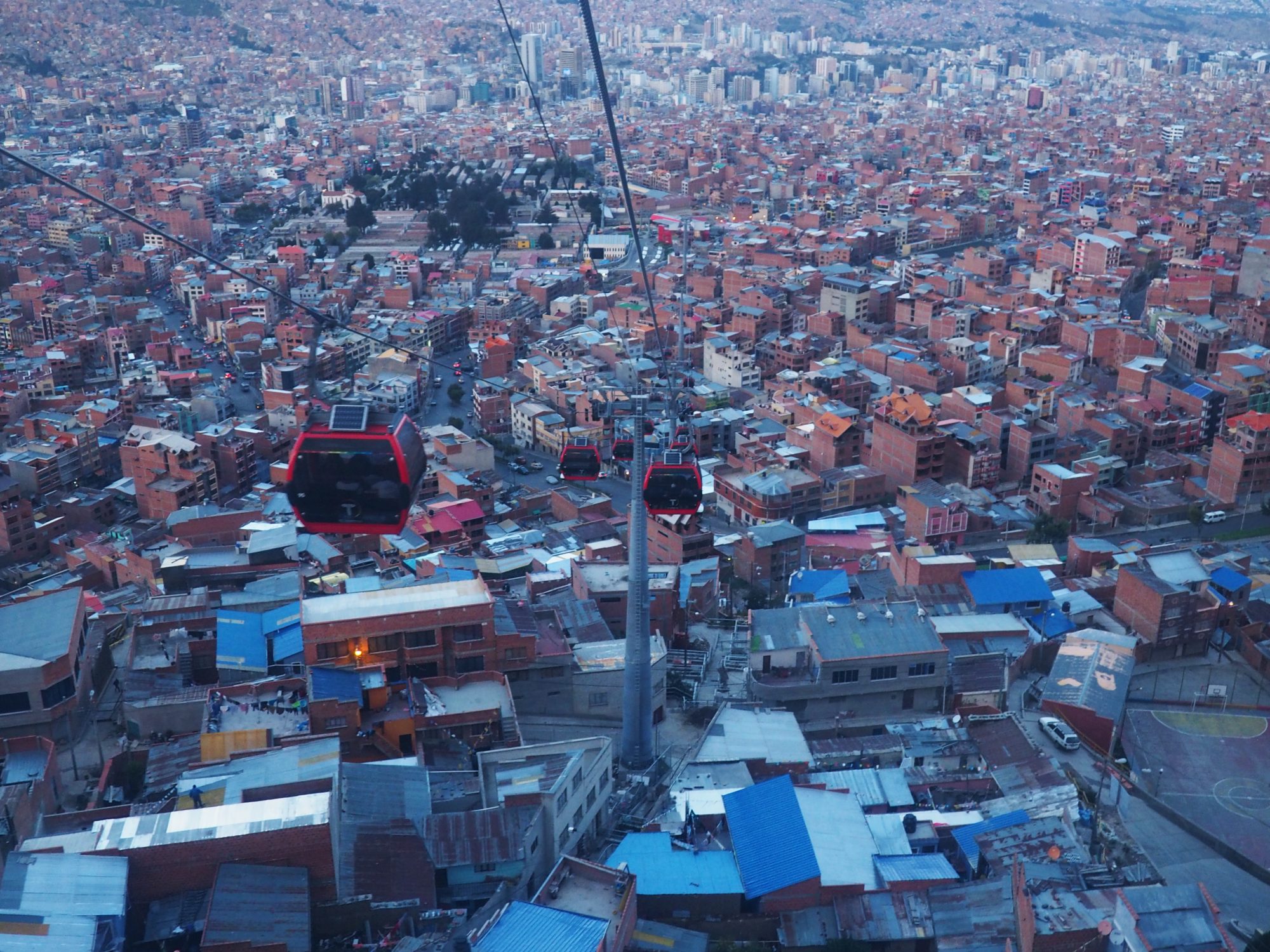La Paz : a metropolis in altitude
The conquistadors arrived in the region in 1535. Following the insurection of Gonzalo Pizaro against the viceroy of Peru, Captain Mendoza sought to create a new city at the crossroads of commercial routes in part to regain control over the region. He also baptizes this town « Nuestra Señora de la Paz », our Lady of peace.
In 1548, he wanted first to create the city on the plateau of the Altiplano but decided to relocate the place of foundation by discovering a place better protected in a geological basin located a few kilometers away.
La Paz’s metropolitan area, which comprises the municipalities of La Paz, El Alto and Viacha, is now the most populous in the country, reaching a population of 2.3 million population. It is for the Bolivians the administrative capital of the country, Sucre being the constitutional capital.
La Paz is located in a basin, surrounded by high mountains which reach up to 6000m above sea level . The city itself is spreading between 3650 and 4000m above the see level – de facto, La Paz is the highest capital in the world. At this altitude, the climate is harsh and cold, and very few trees can grow. Because of the altitude difference, the perception of distances is very unique, climbing a street for a few meters is enough to be out of breath, so that it is often preferable to take one of the many minibuses that travel the city.
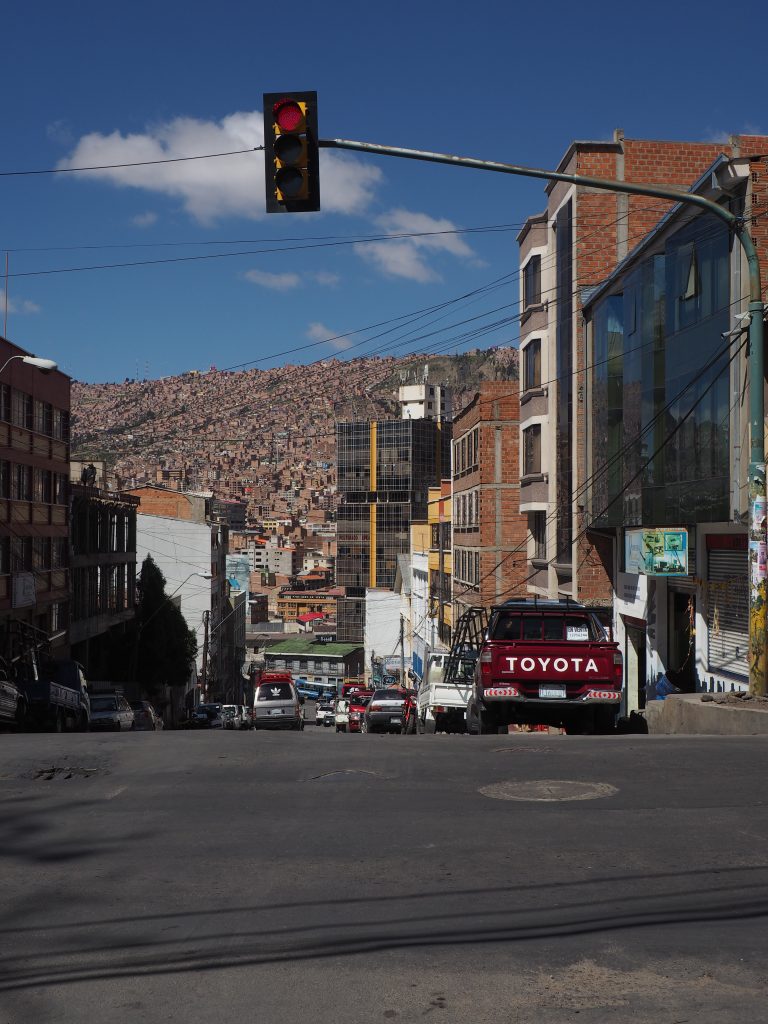
The colonial city and the beautiful neighborhoods dating from the early 1900s are now drowned in incessant traffic. Wedged between the mountains, it now seems impossible to widen the streets to smooth traffic. Minibuses invade the narrow, sloping streets, resulting in a continuous horn concert and a permanent cloud of pollution.
Still when you get used to the altitude and the urban chaos the altitude and urban chaos, there are yet discover architectural gems to discover between modern buildings without character.
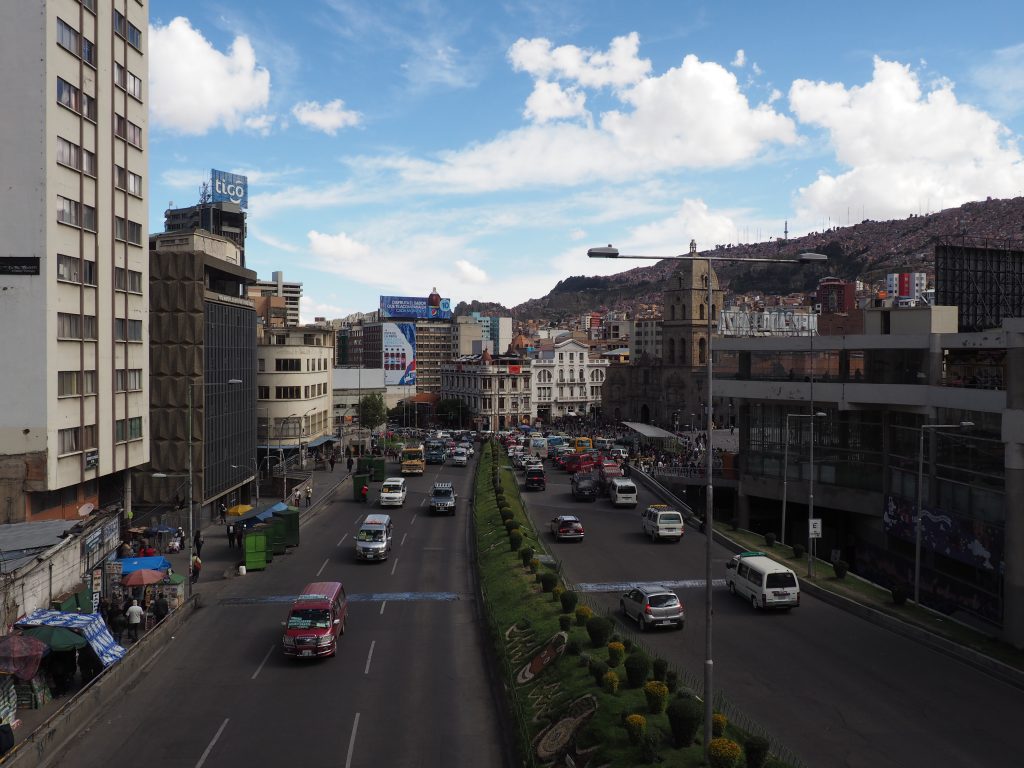
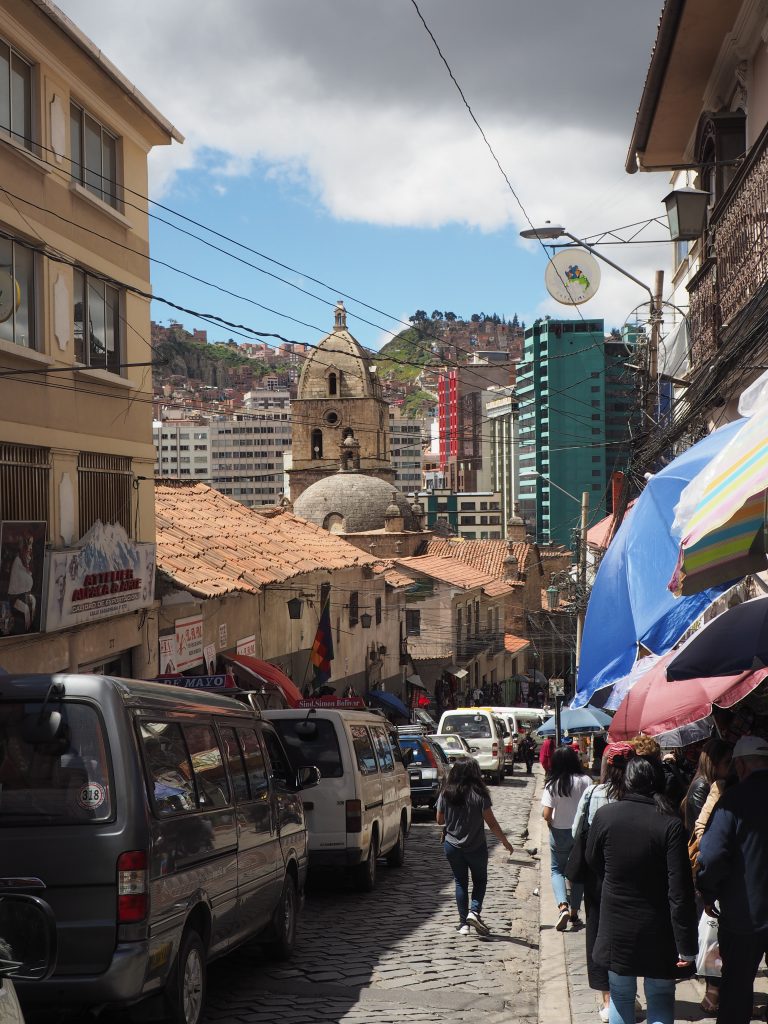
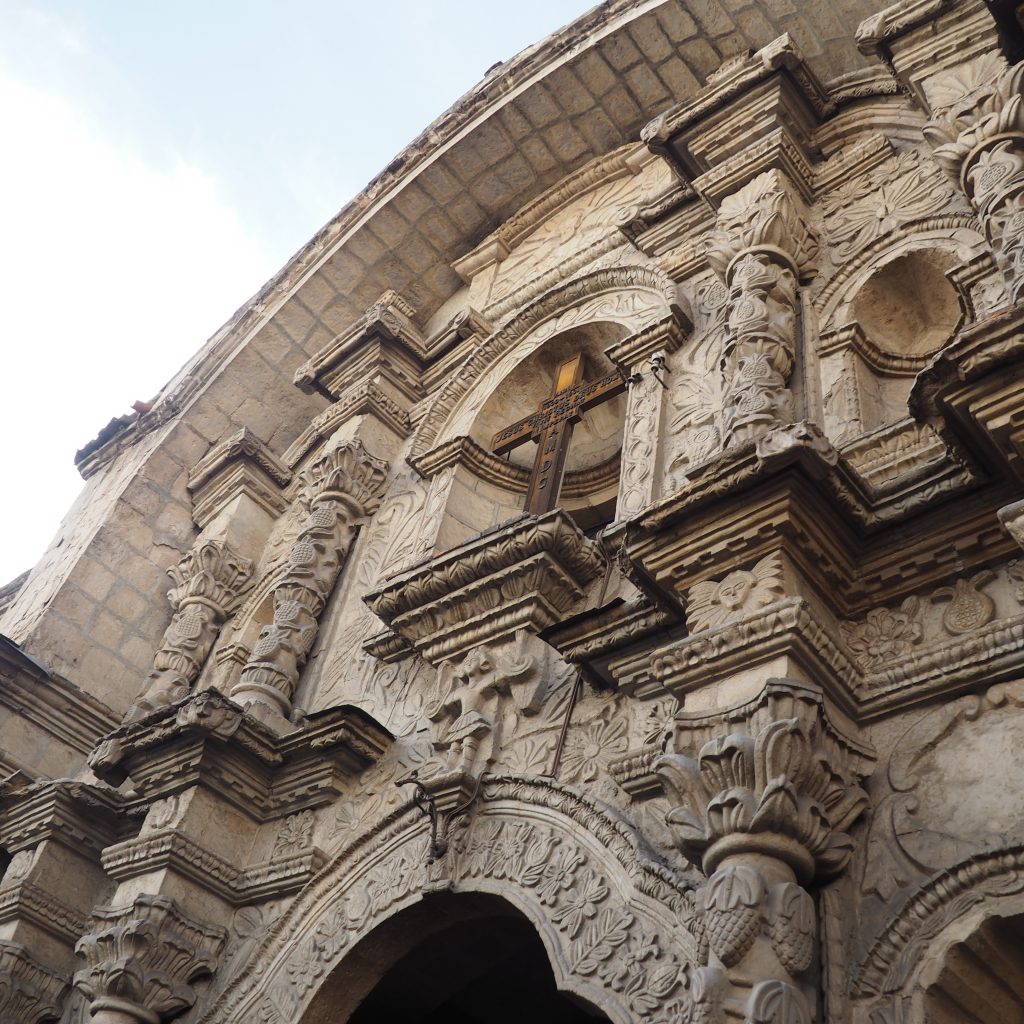
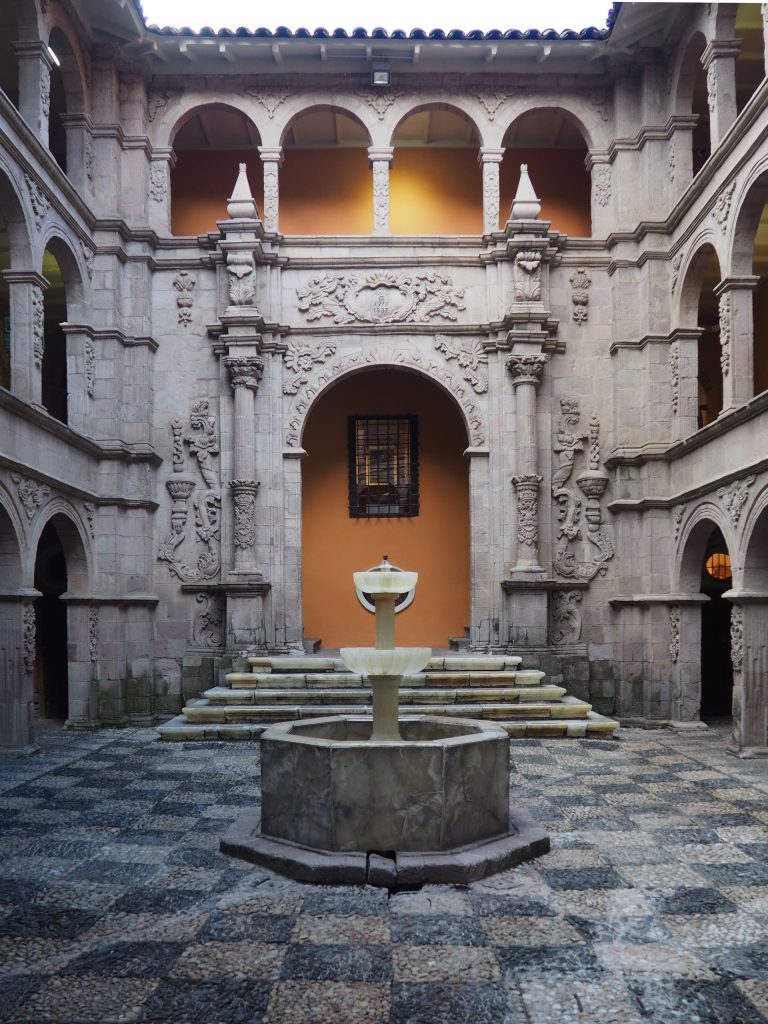
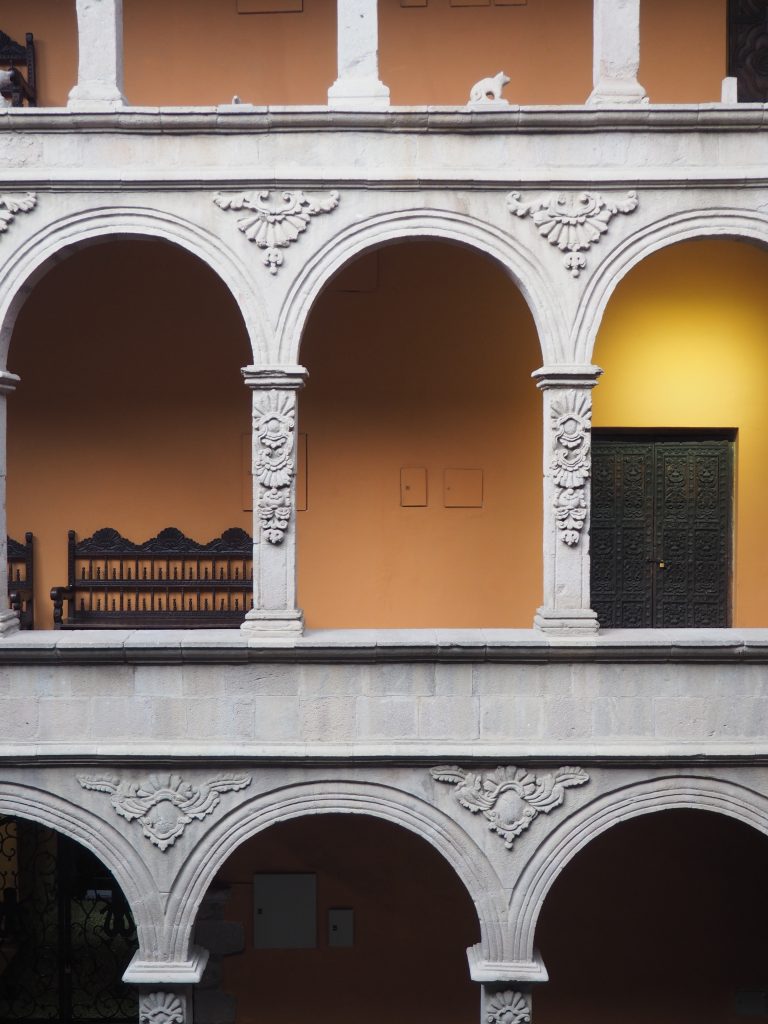

Because of the lack of space in the valley, the suburbs now extend to the mountain slopes that line the city. Concrete and red brick constructions have pushed along staircase or steep roads on slopes of incredible stiffness.
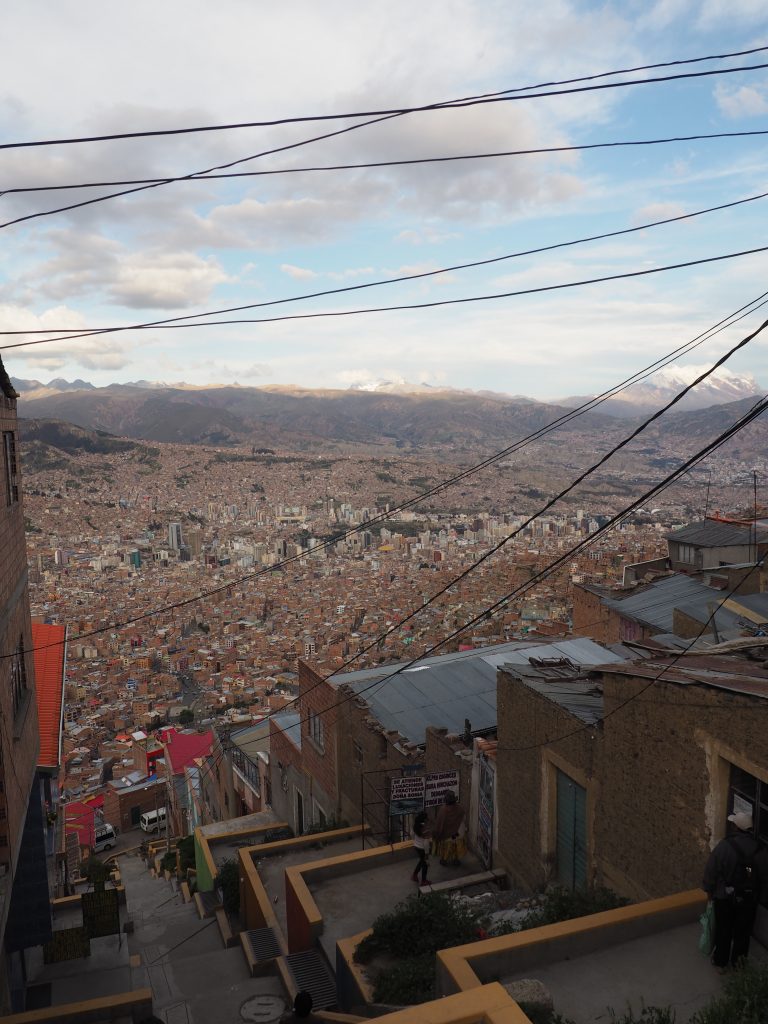
Since the 1950s, the metropolis has developed on the plateau of the Altiplano fueled by rural exodus of poor Aymara population. The city of El Alto officialy created in 1984 has now more than one million inhabitants and is even more populated than La Paz itself .
The city is laid out according to a checkerboard plan, so that the city is airier than La Paz. The population continues to increase by about 5% per year, the city lacks a lot of infrastructure and almost a quarter of the population does not have access to drinking water*.
* https://en.wikipedia.org/wiki/El_Alto_(Bolivie), 08/04/2019
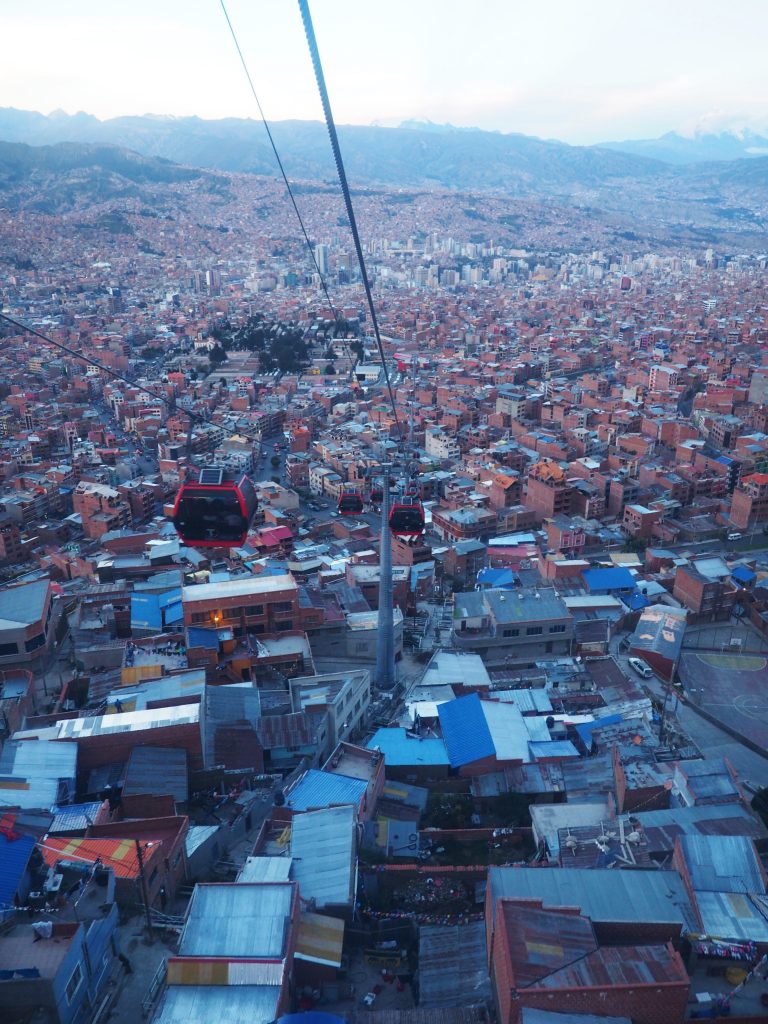
In recent years, several lines of an urban cable car have been put into operation to unclog the city. The cable car network is even the largest in the world, and links a few banlieues with the downtown much quicker than the roads. This new mean of transport allows also to take a bowl of air and to take a full view.
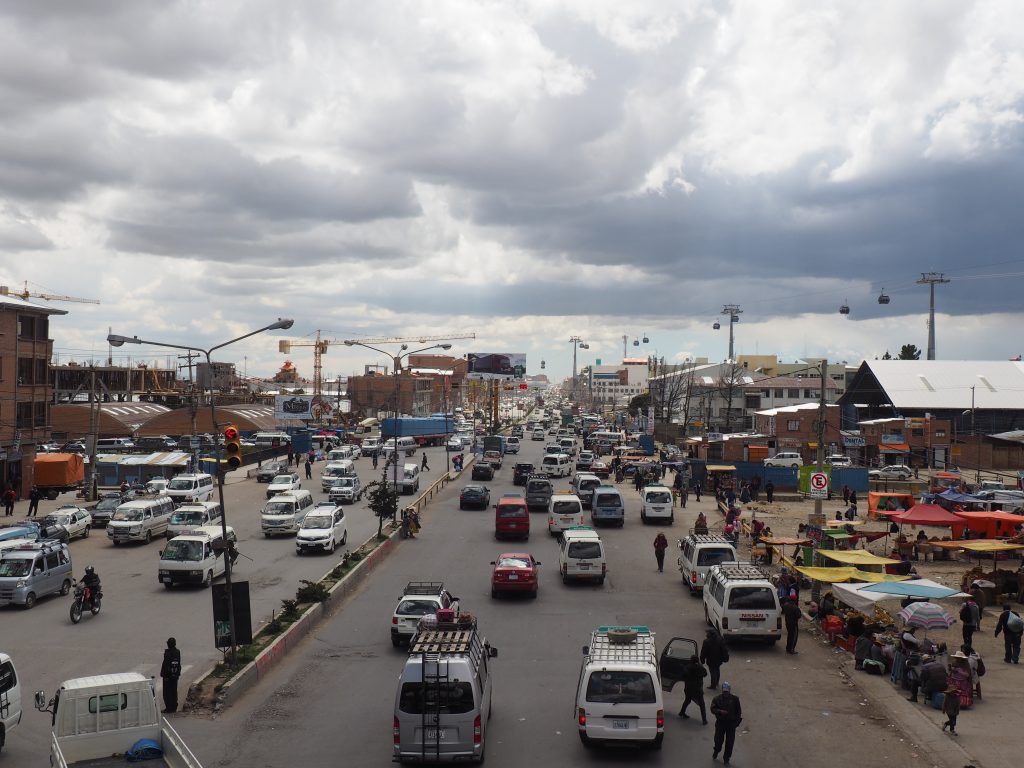
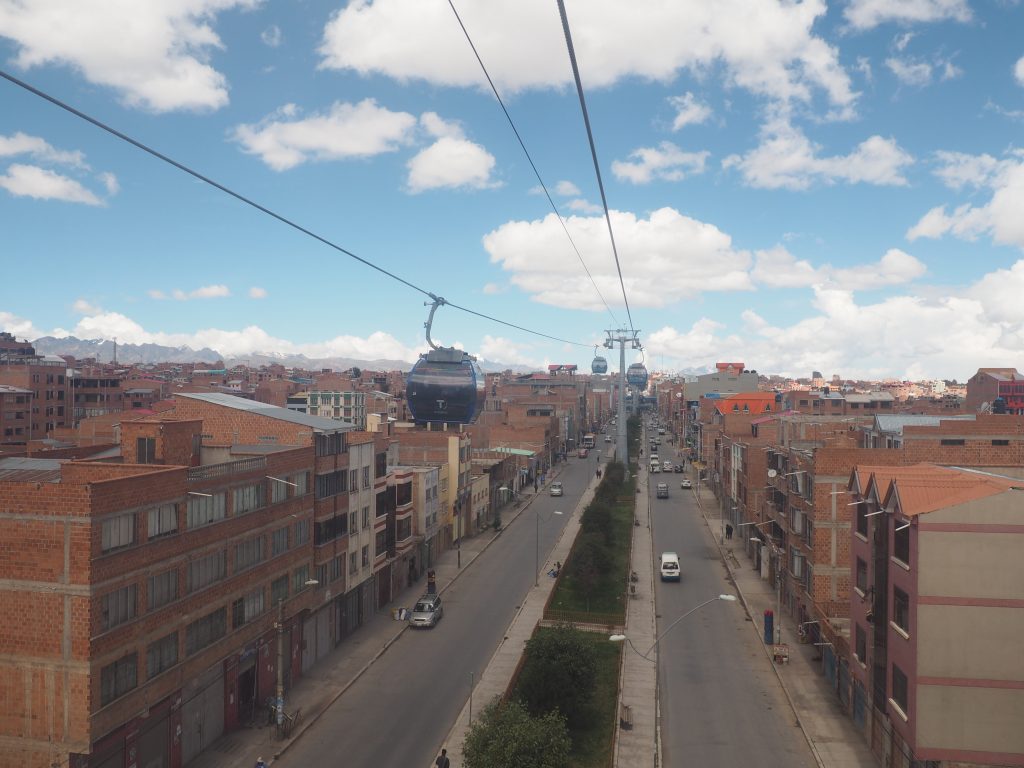
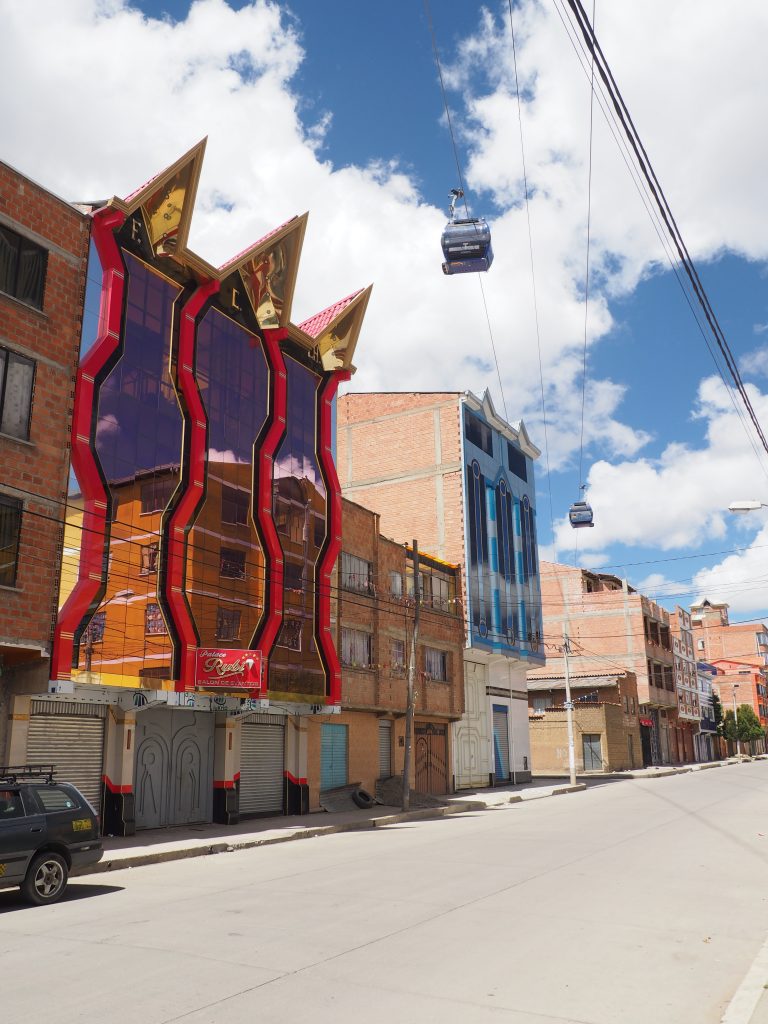
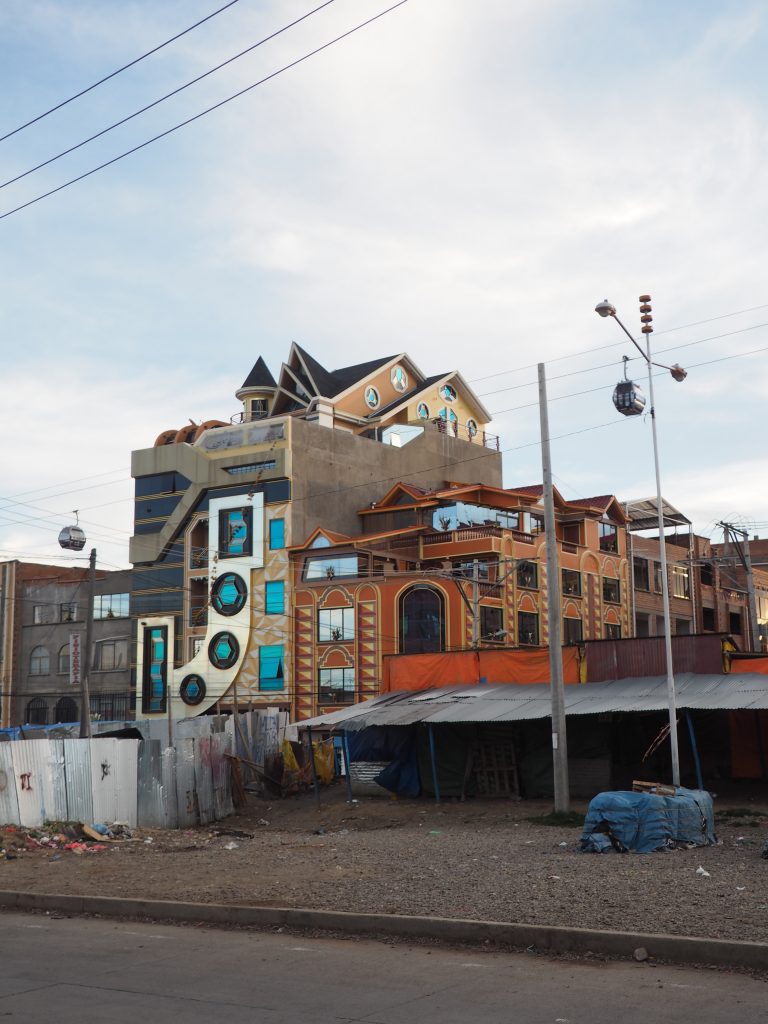
by baptiste quételart – architect / architectural reporter
